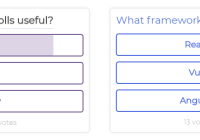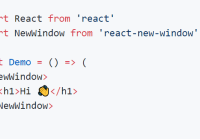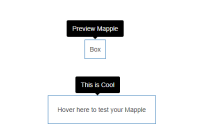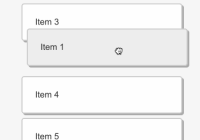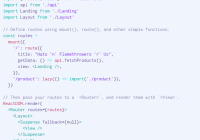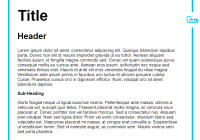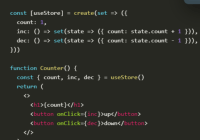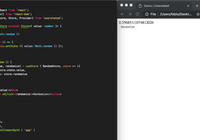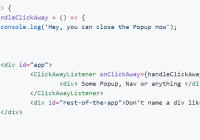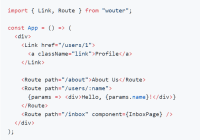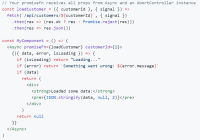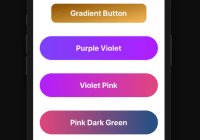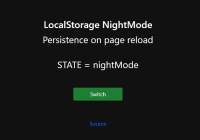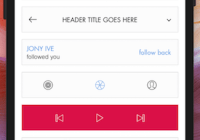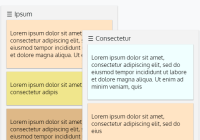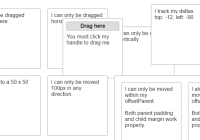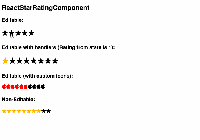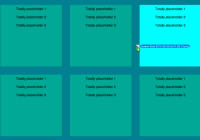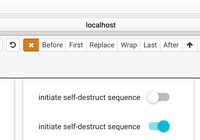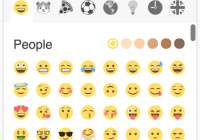Install
yarn add react-sizes npm install react-sizes What and why
React Sizes is a higher-order component with strong performance that transforms window sizes (width and height) into props.
You can check inside your component, for example, if user's window is less than 480 pixels of width, and add a custom content.
It can be very powerful for when you need to display different content for mobile and desktop. But it's not limited to this case. Just use that at your needs.
Usage
With class component.
import React, { Component } from 'react' import withSizes from 'react-sizes' class MyComponent extends Component { render() { return <div>{this.props.isMobile ? 'Is Mobile' : 'Is Not Mobile'}</div> } } const mapSizesToProps = ({ width }) => ({ isMobile: width < 480, }) export default withSizes(mapSizesToProps)(MyComponent)You can play with this example here.
As decorator.
import React from 'react' import withSizes from 'react-sizes' @withSizes(({ width }) => ({ isMobile: width < 480 })) class MyComponent extends Component { render() { return <div>{this.props.isMobile ? 'Is Mobile' : 'Is Not Mobile'}</div> } } export default MyComponentInteroperate with other libraries.
import React from 'react' import withSizes from 'react-sizes' import { withState, compose } from 'recompose' const enhancer = compose( withState('counter', 'setCounter', 0), withSizes(({ width }) => ({ isMobile: width < 480 })) ) const MyComponent = enhancer(({ isMobile, counter, setCounter }) => ( <div> <div> Count: {counter}{' '} <button onClick={() => setCounter(n => n + 1)}>Increment</button> </div> <div>{isMobile ? 'Is Mobile' : 'Is Not Mobile'}</div> </div> )) export default MyComponentWith functional component.
import React from 'react' import withSizes from 'react-sizes' const MyComponent = ({ isMobile }) => ( <div>{isMobile ? 'Is Mobile' : 'Is Not Mobile'}</div> ) const mapSizesToProps = ({ width }) => ({ isMobile: width < 480, }) export default withSizes(mapSizesToProps)(MyComponent)Mess with props.
(Added in 0.1.0)
import React from 'react' import withSizes from 'react-sizes' const MyComponent = ({ isMobile }) => ( <div>{isMobile ? 'Is Mobile' : 'Is Not Mobile'}</div> ) const mapSizesToProps = ({ width }, { mobileBreakpoint }) => ({ isMobile: width < mobileBreakpoint, }) export default withSizes(mapSizesToProps)(MyComponent)then:
<MyComponent mobileBreakpoint={480} /> <MyComponent mobileBreakpoint={400} /> <MyComponent mobileBreakpoint={600} />With presets selectors.
- const mapSizesToProps = ({ width }) => ({ - isMobile: width < 480, - }); + const mapSizesToProps = sizes => ({ + isMobile: withSizes.isMobile(sizes), + });Presets Selectors
You can check all our presets selectors at our main code src/withSizes.js.
withSizes.isMobile = ({ width }) => width < 480 withSizes.isTablet = ({ width }) => width >= 480 && width < 1024 withSizes.isDesktop = ({ width }) => width >= 1024 withSizes.isGtMobile = sizes => !withSizes.isMobile(sizes) withSizes.isGtTablet = sizes => withSizes.isDesktop(sizes) withSizes.isStTablet = sizes => withSizes.isMobile(sizes) withSizes.isStDesktop = sizes => !withSizes.isStDesktop(sizes) withSizes.isTabletAndGreater = sizes => !withSizes.isMobile(sizes) withSizes.isTabletAndSmaller = sizes => !withSizes.isStDesktop(sizes)If it don't fit to your needs, you can create your own selectors.
// utils/sizes/selectors.js export const isntDesktop = ({ width }) => width < 1024 export const backgroundColor = ({ width }) => (width < 480 ? 'red' : 'green') // your component import { isntDesktop, backgroundColor } from 'utils/sizes/selectors' const mapSizesToProps = sizes => ({ canDisplayMobileFeature: isntDesktop(sizes), backgroundColor: backgroundColor(sizes), })
sizesargument is an object withwidthandheightproperties and represents DOM window width and height.
Guide
mapSizesToProps(sizes)
sizes argument is an object with width and height of DOM window.
const mapSizesToProps = sizes => { console.log(sizes) // { width: 1200, height: 720 } (example) }In pratice, it is a callback that return props that will injected into your Component.
const mapSizesToProps = function(sizes) { const props = { backgroundColor: sizes.width < 700 ? 'red' : 'green', } return props }But you can simplify this to stay practical and elegant.
const mapSizesToProps = ({ width }) => ({ backgroundColor: width < 700 ? 'red' : 'green', })Server Side Rendering
Since React Sizes rely on window to computate sizes, we can't computate the values in server enviroment. To try to get around this we can guess user viewport based on your user-agent, and pass values by a Context Provider.
But be careful, user-agent based detection is not a reliable solution. It's a workaround.
// Config can be created based on user-agent. See below const config = { fallbackWidth: 360, fallbackHeight: 640 } return ( <SizesProvider config={config}> <App /> </SizesProvider> )Example:
import MobileDetect from 'mobile-detect' import Express from 'express' import { SizesProvider } from 'react-sizes' // All other imports const getSizesFallback = userAgent => { const md = new MobileDetect(userAgent) if (!!md.mobile()) { return { fallbackWidth: 360, fallbackHeight: 640, } } else if (!!md.tablet()) { return { fallbackWidth: 768, fallbackHeight: 1024, } } return { fallbackWidth: 1280, fallbackHeight: 700, } } // Note: you don't need to use express, this is just an example const app = new Express() app.use((req, res) => { // ... const sizesConfig = getSizesFallback(req.headers['user-agent']) const App = ( <AnotherProvider> <Router location={req.url}> <SizesProvider config={sizesConfig}> <Root /> </SizesProvider> </Router> </AnotherProvider> ) res.status(200) res.send(`<!doctype html>\n${ReactDOM.renderToString(<App />)}`) res.end() }) app.listen(/* ... */)Performance Notes
Shallow Compare
React Sizes do a shallow compare in props generated from mapSizesToProps (called propsToPass), so it will only rerender when they really change. If you create a deep data sctructure, this can generate false positives. In these cases, we recommend using immutable for a more reliable shallow compare result. Or just don't use deep data structures, if possible.
Contribute
You can help improving this project sending PRs and helping with issues.
Also you ping me at Twitter












